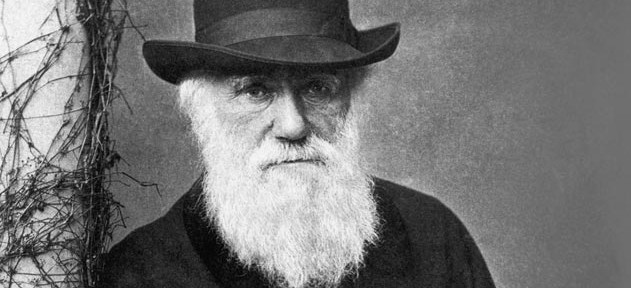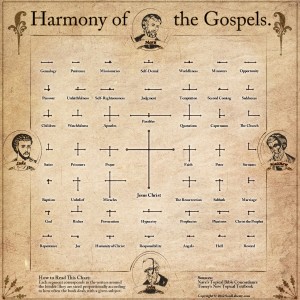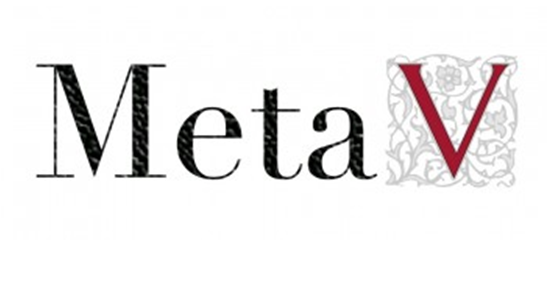How can we know the Bible is of supernatural origin, and what makes it different from any other holy book that people claim to be from God? To answer this question, many focus on evidence we find outside of the Bible: archaeological studies, historical documentation, and advanced scientific knowledge – all of which can be very helpful to answer skepticism. These lines of argument are built on knowledge found outside the Bible, but there is one line of evidence that relies mainly on scripture itself: the fulfillment of prophecy.
First, let me briefly address the common argument that using the Bible to prove the Bible is circular reasoning. The Bible is not just one book. It is a collection of 66 books by 40 different authors. If it were one work by one author (like many other “holy” books), it would be circular reasoning. This article shows the predictions of prophets whose fulfillment is witnessed by someone else in another time period. In many cases, this witness is recorded in scripture; in a few cases it is mentioned elsewhere in history. This represents multiple, independent lines of corroborating evidence – not circular reasoning.
Divine Origin
Only a being which exists outside the constraints of time can give a detailed description of what will happen in the future with one-hundred percent accuracy. (In general, I have found those who claim a biblical prophecy has failed to be fulfilled are referring to end-times predictions they have mis-categorized.) This is a characteristic which sets it apart from the Qur’an and many other “holy” books which have no prophecies whatsoever or the Book of Mormon which is filled with false predictions.
Here I’ll describe just a few prophecies which I believe prove the Bible’s supernatural origin. See 100prophecies.org, CARM, or our Google Custom Search to find many, many more mind-blowing examples of God’s prophetic words given to his people who compiled them in what we know as the Bible.
Daniel’s 69 Weeks
Know therefore and understand, that from the going forth of the commandment to restore and to build Jerusalem unto the Messiah the Prince shall be seven weeks, and threescore and two weeks: the street shall be built again, and the wall, even in troublous times.
– Daniel 9:25
This prophecy is part of larger discourse in Daniel 9:24-27 detailing the “seventy weeks” revealed to the prophet Daniel by the angel Gabriel. In verse 25, he indicates that the Messiah will come 7 weeks plus 62 weeks (69 weeks total) from the time a decree to restore Jerusalem was issued to the time the Messiah would arrive. Each “week” would have generally been understood by Jewish readers as representing a period of 7 years, each year being 360 days according to the Jewish calendar. This would make the time period 483 years (173,880 days) from the decree to the Messiah’s coming.
The decree came when Nehemiah met with Artaxerxes in 445 B.C. (Neh 2:4-8). That would place Messiah’s coming in 32 A.D. for the prophecy to be exact. The day of his coming was the Triumphal Entry recorded in Luke 19:28-48 (and parallel accounts in other gospels). Prior to that, he kept telling his disciples “mine hour has not yet come.” Chuck Missler argues that Luke 19:44 is in fact a rebuke for not knowing the “hour of they visitation” because the prophecy was so precise they should have been waiting for him that day. For a fuller explanation of this prophecy, other remarkable aspects of the “seventy weeks”, and discussion of the authenticity of this text, see Dr. Missler’s article.
Daniel’s Vision of the Four Great Beasts

The vision given by the Angel Gabriel in Daniel 7-8 is parallel to the vision of the statue in Daniel 2 (the photo on the right). I have chosen the former because of its specificity. Daniel records not only the symbolism but the interpretation of it which lines up perfectly with the history of the nations listed.
Daniel 8:20 names the kings of “Media and Persia” symbolized by a ram with great power. This matches the Medo-Persian empire as recorded by many historians. Daniel 8:21 names the king of “Grecia” symbolized by a goat which overtakes the ram from the west. Here again, the names and geography match the record of the Greek Empire and the conquest of Alexander the Great. Finally, he says four kingdoms will arise when the Greek Empire falls. Though he did not name these kings, they were: Ptolemy, Lysimachus, Cassander, and Seleucus.
Far more could be said about the sequence of events, specific symbolism, and other details which Daniel would not be able to manipulate to show he was a true prophet. See this article by Kyle Butt for a more thorough analysis and defense of this prophecy.
The Reign of Cyrus
Thus saith the Lord to his anointed, to Cyrus, whose right hand I have holden, to subdue nations before him; and I will loose the loins of kings, to open before him the two leaved gates; and the gates shall not be shut; (emphasis mine)
-Isaiah 45:1
Here Isaiah names a king who did indeed gain great power without much resistance. It was written at least 100 years before Cyrus was even born, let alone had risen to power. This is yet another prophecy which could not have been fulfilled by a group of people wishing to validate what they foretold. Chuck Missler has a good article on the authenticity of Isaiah and the reign of Cyrus.
Destruction of the Temple
Jesus explained that the temple in Jerusalem would be torn down all the way to its foundations in Matthew 24:1-2 (Also see the prophecy in Daniel 9:26 and parallel accounts in Mark 13:1-2 and Luke 21:5-6.):
And Jesus went out, and departed from the temple: and his disciples came to him for to shew him the buildings of the temple. And Jesus said unto them, See ye not all these things? verily I say unto you, There shall not be left here one stone upon another, that shall not be thrown down.
Josephus, a historian who was also a Jewish Priest (i.e. did not view Jesus as the promised Messiah), recorded the destruction of the temple in 70 A.D. The lack of any mention of this in the Gospels is further evidence of their authenticity and early writing. If Matthew, Mark, Luke and John were tossing in mentions of fulfilled prophecies to support their stories, why would they all leave out such an important event? Surely this would have lent more weight to Jesus’ words and given them reason to make up this evidence as well. The more likely explanation is that in fact the Gospels were written beforehand and the truth of Jesus’ words were recorded by others at a later date. Read more about this event here.
Jesus Christ
In addition to Daniel’s vision listed above, over 300 prophecies about the birth, life, death, and resurrection of Jesus were made in the Old Testament and fulfilled in the New Testament (see a complete list here). Some are more open to interpretation than others, but the sheer volume of messianic predictions is undeniable. Like the things mentioned above, there are details about place names and sequences of events which shut out vague interpretations and would also be out of Jesus’ control if he were just a man. These include his ancestry, birthplace, the national reaction to him, the amount of silver exchanged for his life…it is simply overwhelming. Rather than deal with specific prophecies in this category and the possible objections one-by-one, I will address them more generally and again point to our search tool for further research.
Common Objections to Prophecy
Many who are skeptical of prophecy in general would argue that the wording or symbolism is loose enough that it can simply be re-interpreted to fit history. Consider this prophecy from Nostradamus which supposedly predicted the 9/11 attacks in New York City:
Earthshaking fire from the center of the Earth
Will cause tremors around the New City.
Two great rocks will war for a long time,
Then Arethusa will redden a new river.
I could see how this might fit the World Trade Center attacks, but it could match any number of other events as well. What sets apart prophecies like this from the biblical ones is that the latter includes very specific details which cannot be interpreted multiple ways. The sheer volume of messianic prophecies further narrow the range of possibilities so that not just any old “Messiah” would be able to claim he fulfilled biblical requirements.
Others would say the text was manipulated over time to support a religious agenda. This accusation fails for a number of reasons. First, we have copies of the Old Testament, prophecies and all, that date back hundreds of years before Jesus was born (see the Septuagint and Dead Sea Scrolls). This means if anyone altered the passages about him, it happened in the New Testament.
But, does that work? The people who were still around in the years following Jesus’ ministry would certainly have refuted not accepted utter fabrications of events they would have known something about. Paul, before he was an evangelist, was a Pharisee of Pharisees. He had deep knowledge of said prophecies and a hatred for all who followed Jesus. He would not only have reason but also the influence to expose such a fraud. Instead, he repented and accepted the “Gospel Truth.” The video below is a good discussion with Lee Strobel talking about how he viewed these issues when he was an atheist and after he became a Christian.
Further objections and theories about how the Gospel writers must have invented this intricate story quickly become self-contradictory and sound more like an ancient Jewish conspiracy theory than a reasonable, objective look at the evidence.
How Will You Respond?
This is more than an academic exercise. God didn’t just make (and keep) the promises he gave about people and nations that died long ago. He also makes promises about things yet to come which matter to you and I. There will be a day when Jesus returns to fulfill the “end-times” prophecies, and when that day comes we better know where we stand. Those who repent of their sins, seek forgiveness through Jesus’ blood shed on the cross, and receive the Holy Spirit will be with him in Heaven. Those who run from his truth will choose a worse fate – an eternity in Hell.
Do not make that choice before honestly examining your heart to know whether you reject the sure word of prophecy because it “doesn’t hold water” or if it is because you are looking for any reason at all to deny the God who sees all things from beginning to end. Do not be deceived by yourself or by false teachers, for you know not the day nor the hour when it will be too late to turn back.











